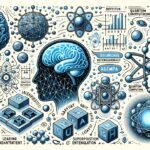Welcome to the intriguing world of Industrial AI, where the future of manufacturing transforms before our eyes. This groundbreaking technology is reshaping how things are made, bringing about unprecedented efficiency, safety, and customization that promise to elevate the industrial sector to new heights. Get ready to explore how Industrial AI is not just an advancement but a revolution in the making, setting the stage for a smarter, more sustainable manufacturing landscape.
Understanding Industrial AI
Unraveling the Mystery of Industrial AI: A Game-Changer in the Making
Hey there! Ever heard of Industrial AI and wondered what the hype is all about? Well, let me break it down for you in simple terms. Industrial AI is like the brainy geek who transforms the traditional factory into a smart, super-efficient powerhouse. It’s all about injecting artificial intelligence into the industrial sector to not only make machines smarter but to also crank up productivity, safety, and sustainability to levels we’ve never seen before. Intrigued? You should be, because Industrial AI is flipping the script on manufacturing and it’s a game-changer.
What Exactly is Industrial AI?
Imagine your standard factory setup. Now, sprinkle some AI magic over it. What you get is Industrial AI – a smart blend of artificial intelligence technologies like machine learning, computer vision, and big data analytics, all working together to supercharge industrial operations. It’s about using AI to analyze massive heaps of data from machines and sensors, and then using those insights to make real-time decisions, predict maintenance needs before problems occur, and optimize production processes to the max. It’s pretty much giving industrial operations a brain that continuously learns and improves.
Why is Industrial AI a Game-Changer?
- Boosting Efficiency and Productivity: By leveraging AI, factories can predict and avoid downtime, fine-tune their production lines in real-time, and significantly reduce waste. This means churning out more products, faster, and with fewer resources. Talk about doing more with less!
- Enhancing Quality Control: With Industrial AI, it’s like having an army of tireless, eagle-eyed inspectors ensuring every product meets the highest quality standards. This leads to fewer defects, happier customers, and a better reputation. Quality is king, after all.
- Improving Safety: Industrial AI can monitor and analyze workplace conditions in real-time, foresee potential hazards, and alert workers before accidents happen. Keeping employees safe isn’t just good ethics; it’s also good business.
- Enabling Smart Maintenance: Say goodbye to unexpected breakdowns and hello to predictive maintenance. Industrial AI helps anticipate machinery issues before they happen, ensuring smoother operations and saving a ton of money in repair costs. It’s like having a crystal ball for your factory.
- Driving Sustainability: With its ability to optimize energy use and reduce waste, Industrial AI is a powerful ally in the fight against environmental damage. It’s about doing well by doing good, catapulting industries toward a greener future.
- Personalization at Scale: Imagine being able to offer products tailored to individual customer preferences without slowing down production. Industrial AI makes this dream a reality, offering unprecedented levels of customization at high speeds.
Getting Started with Industrial AI
Dipping your toes into the Industrial AI pool might seem daunting, but it’s all about taking that first step. Start small, identify a specific problem area where AI can help, and gradually build your AI capabilities from there. The key is to think of AI not as a one-off project but as an integral part of your long-term strategic vision. And remember, the journey of a thousand miles begins with a single step.
As we forge ahead into this brave new world of smart industries, it’s clear that Industrial AI isn’t just a trendy buzzword; it’s a transformative force. By bringing together the power of AI, data analytics, and machine learning, industries are set to achieve new heights of efficiency, productivity, and innovation. Industrial AI isn’t just changing the game; it’s rewriting the rules. So, ready to jump on the Industrial AI bandwagon and ride it into the future? The time is now.
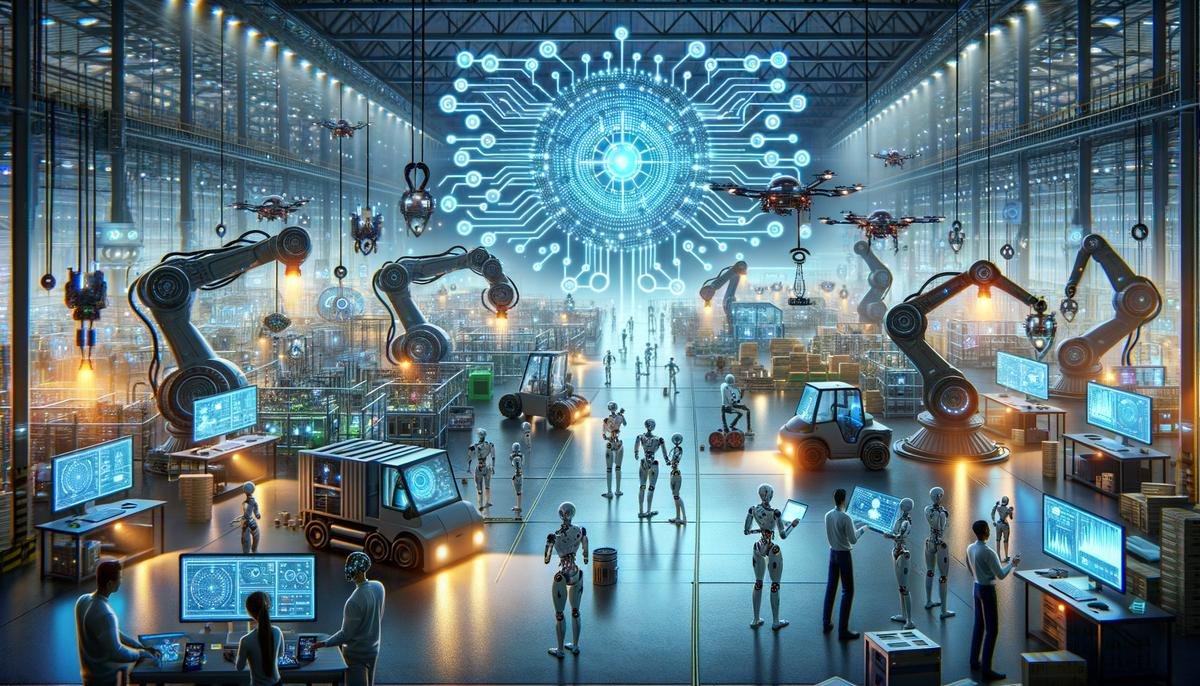
The Impact of Siemens’ AI on Manufacturing
Diving deeper into the world of Industrial AI, Siemens is not just partaking in the revolution; it’s leading the charge, redefining what’s possible in the manufacturing landscape. Their approach to Industrial AI is like unlocking a cheat code for the manufacturing world – it’s game-changing. Let’s peel back the layers and see just how Siemens is making waves.
First off, Siemens is all about pushing the envelope with its innovative AI-based solutions. Picture this: factories where machines talk to each other, predicting problems before they happen, and adapting in real time to changes. That’s not science fiction; that’s Siemens’ Industrial AI working its magic. By integrating smart algorithms and leveraging vast pools of data, Siemens is turning regular factories into smart factories. These aren’t your grandad’s factories; these are state-of-the-art operations that are efficient, productive, and incredibly savvy.
Now, how is Siemens achieving this wizardry? One word: MindSphere. MindSphere is Siemens’ cloud-based, open IoT operating system that is transforming the manufacturing sector. Think of MindSphere as the brain of the operation, collecting data from all corners of the manufacturing process, analyzing it, and using it to optimize everything from production efficiency to energy consumption. This is big data analytics on steroids, giving manufacturers insights they’ve never had before.
But Siemens knows it’s not just about having data; it’s what you do with it. That’s where their machine learning comes into play. Siemens’ AI doesn’t just collect data; it learns from it, continuously improving processes and making smarter predictions about maintenance needs and production schedules. This means less downtime, lower costs, and higher quality products. It’s like having your cake and eating it too.
Computer vision is another ace up Siemens’ sleeve. In quality control, for example, AI-powered cameras can spot defects faster and more accurately than the human eye ever could. This technology isn’t just about catching mistakes; it’s about striving for perfection, ensuring every product that leaves the factory is up to snuff.
But wait, there’s more. Siemens is also paving the way for sustainability in manufacturing through its Industrial AI initiatives. By optimizing energy use and reducing waste, Siemens’ smart factories aren’t just good for business; they’re good for the planet. This is crucial in a world where sustainability is no longer a nice-to-have but a must-have.
Furthermore, Siemens is democratizing AI, making it accessible not just to the big players but to businesses of all sizes. With solutions like MindSphere, small and medium-sized enterprises can tap into the power of AI without the need for hefty investments or in-house expertise. It’s like giving everyone a shot at being a superhero in the manufacturing realm.
In essence, Siemens is not just changing the game with its approach to Industrial AI; it’s creating a whole new game. By harnessing the power of machine learning, big data analytics, and computer vision, Siemens is helping manufacturers around the globe step into the future. From boosting efficiency and quality to driving sustainability, Siemens’ Industrial AI is reshaping the manufacturing landscape, one smart factory at a time.
So, as we ponder the future of manufacturing, it’s clear Siemens is leading the way, showing the world just how transformative Industrial AI can be. With innovative thinking and cutting-edge technology, the possibilities are just beginning to unfold. And in this new era, the manufacturers who embrace Siemens’ Industrial AI are the ones who will not just survive but thrive. The future is here, and Siemens is helping to build it, one AI innovation at a time.
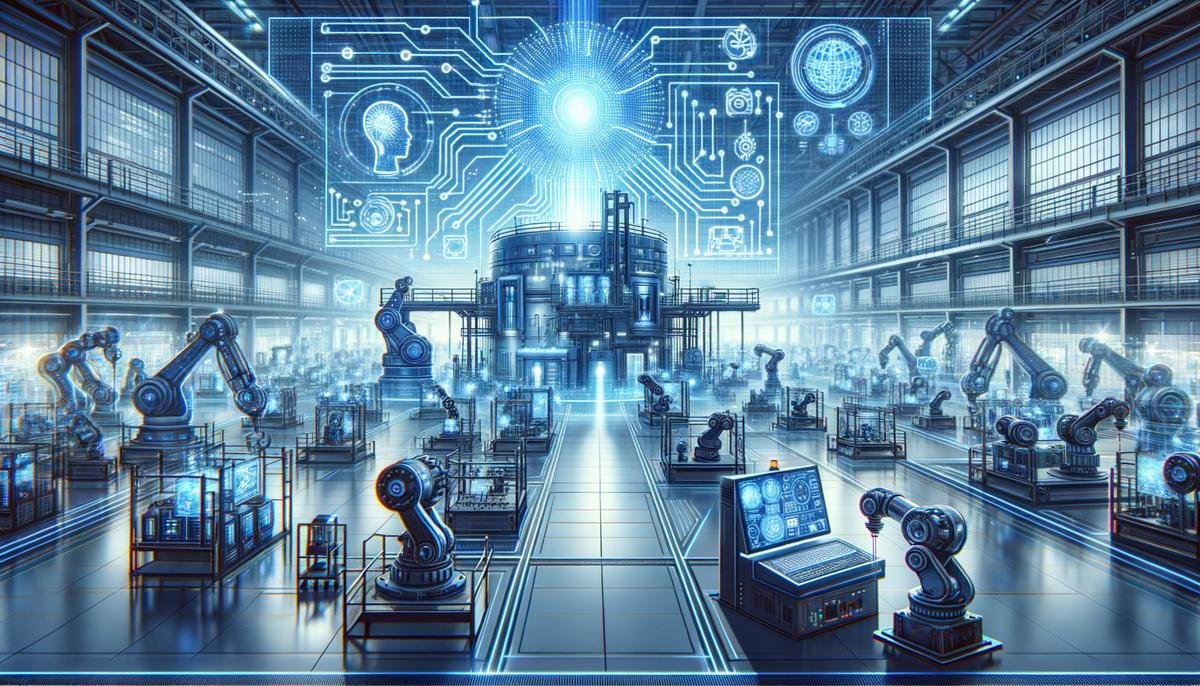
Barriers and Challenges in AI Adoption
Jumping right into the mix, diving into the world of Industrial AI sounds like a thrilling sci-fi adventure. But hold your horses! While it promises a future as bright as the noon sun, barriers and hurdles pop up on the road, making the journey a tad bumpy for companies. So, let’s dissect these challenges one by one, shall we?
First up, the glittering world of technology comes with a hefty price tag. Yes, the cost! Implementing Industrial AI isn’t just about purchasing software and giving it a whirl. We’re talking serious investment in high-tech equipment, software, and sometimes even overhauling the entire system. And let’s not forget the ongoing costs of maintenance and updates. Phew! It’s like feeding a never-ending money monster.
Next on the list is the Data Dilemma. Industrial AI thrives on data, the more, the merrier. But gathering this data is like trying to herd cats. It’s tricky, especially when it comes to quality data that’s accurate, relevant, and in a format that’s ready for AI munching. Plus, concerns about data privacy and security add another layer of complexity. It’s like walking a tightrope over a data privacy pit, where one slip could lead to a privacy breach disaster.
Then there’s the Skill Gap Saga. Imagine having a supercar but no idea how to drive it. That’s what it’s like having Industrial AI without the right talent to steer it. Finding folks who are wizards in AI, machine learning, and data science is as tough as finding a needle in a haystack. And once you find them, keeping them can be even harder, given the high demand for these rare gems.
Resistance to change is another behemoth blocking the path. Let’s face it, humans and change mix about as well as oil and water. Introducing AI into the industrial sphere can cause unease, fear of job loss, and the infamous ‘but we’ve always done it this way’ mentality. Convincing the workforce to embrace AI, and ensuring they feel secure and upskilled, requires a Herculean effort.
Lastly, let’s talk Integration Irritation. Picture this: you’ve got your shiny new AI system ready to roll, but now you need it to play nice with your existing systems. Sometimes, it’s like trying to fit a square peg into a round hole. Legacy systems can be stubborn, and getting them to integrate seamlessly with AI technologies can lead to frustration, delays, and additional costs. It’s the techie version of trying to solve a Rubik’s cube in the dark.
Navigating through these hurdles requires patience, strategic planning, and sometimes just biting the bullet on costs and complexities. But fear not, for the companies that successfully jump these hurdles are the ones that will sprint ahead in the industrial realm, reaping the rewards of efficiency, innovation, and staying power in the market.
So, as we wrap up this exploration (without a fancy summary, because who needs one when you’ve had a rollercoaster ride of information?), remember that the road to Industrial AI might be bumpy, but the destination? Now that’s something worth striving for. Let’s gear up, face those challenges head-on, and pave the way for a smarter, AI-driven industrial future. Buckle up, it’s going to be an exciting ride!
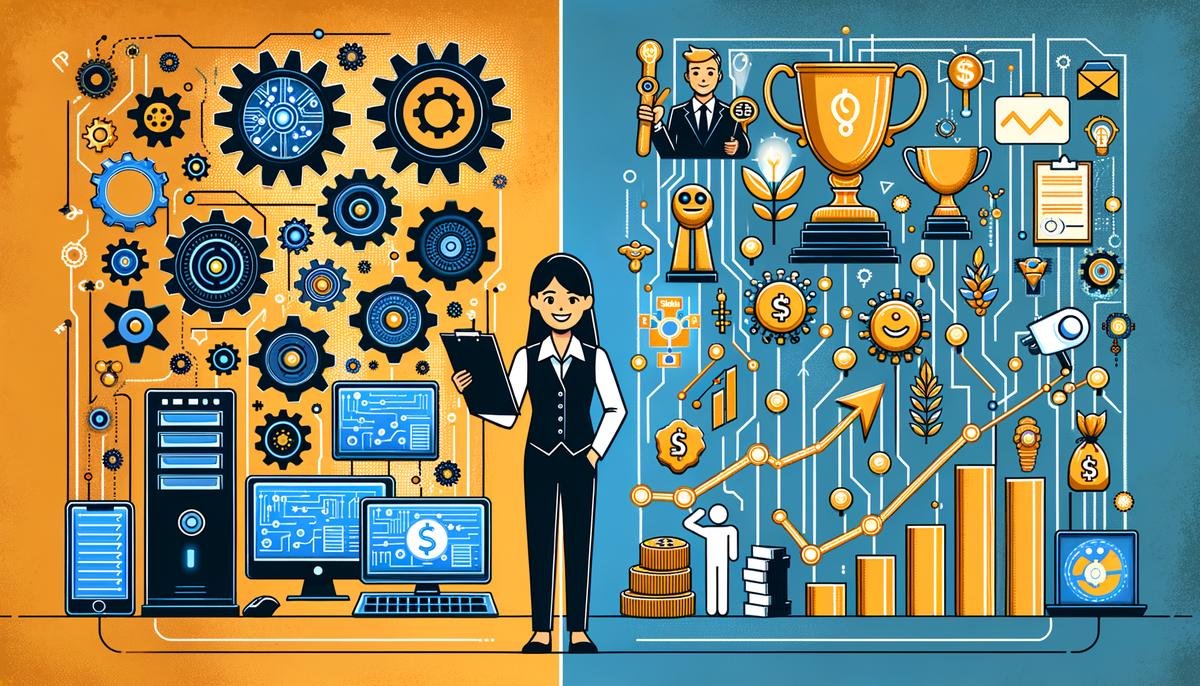
Future of Manufacturing with Siemens’ AI
Now that we’ve explored the groundbreaking role of Siemens’ AI in transforming manufacturing, it’s critical to address the hurdles businesses might face on this innovative journey. Despite the significant perks, navigating the waters of Industrial AI doesn’t come without its challenges. Let’s dive into some of the roadblocks you might encounter and how you can steer clear of them.
First up, let’s talk money – the cost of implementing Industrial AI can be a tall order for many enterprises, especially small to medium-sized ones. High upfront investments for AI technologies, including sophisticated hardware and software, can be pretty daunting. But here’s a pro tip: consider AI as an investment rather than a cost. With strategic planning and prioritization, the long-term gains in efficiency and productivity will likely offset the initial financial outlay. Look for scalable AI solutions that allow you to start small and expand as you see the benefits accumulate.
Data, the lifeblood of AI, presents another set of challenges. Gathering ample, high-quality data for Industrial AI to analyze and learn from is no small feat. Moreover, managing this data effectively to ensure it’s usable, secure, and accessible when needed, adds another layer of complexity. To conquer this, establishing robust data governance practices is key. Start collecting data early, keep it organized, and ensure your team understands the importance of high-quality data input. Remember, the more accurate the data, the more reliable the AI’s output.
Finding and keeping the right people is another hurdle. Skilled AI, machine learning, and data science talent are in high demand, making it a competitive space for hiring. To overcome this, consider investing in your existing workforce through training and development. Creating a culture of continuous learning not only helps in retaining talent but can also attract new skills to your organization. Additionally, collaborating with academic institutions for fresh talent and innovative ideas can be a smart move.
Change resistance is a real phenomenon. The introduction of AI in the workplace can spark fears, from job security to the daunting task of mastering new technologies. Addressing these concerns head-on through clear communication and involving the workforce in the AI integration process can pave the way for smoother transitions. Highlight the value AI brings, such as taking over mundane tasks, thus allowing employees to focus on more creative and strategic aspects of their jobs.
Lastly, marrying AI with legacy systems poses its own set of challenges. These older systems weren’t designed with AI in mind, making integration tricky. But fear not, solutions do exist. Leveraging middleware or adopting microservices architecture can facilitate communication between old and new systems. It might require some tweaking, but the result – a harmonious blend of tradition and innovation – is worth the effort.
In conclusion, while the road to embracing Siemens’ AI in manufacturing might have its bumps, the destination offers a realm of untapped potential and unprecedented opportunities. By strategically tackling the challenges of cost, data management, talent scarcity, resistance to change, and system integration, businesses can navigate these waters successfully. The future is bright for those ready to innovate and transform their manufacturing processes with AI. The era of smart manufacturing is here, and it’s time to be part of this exciting journey!
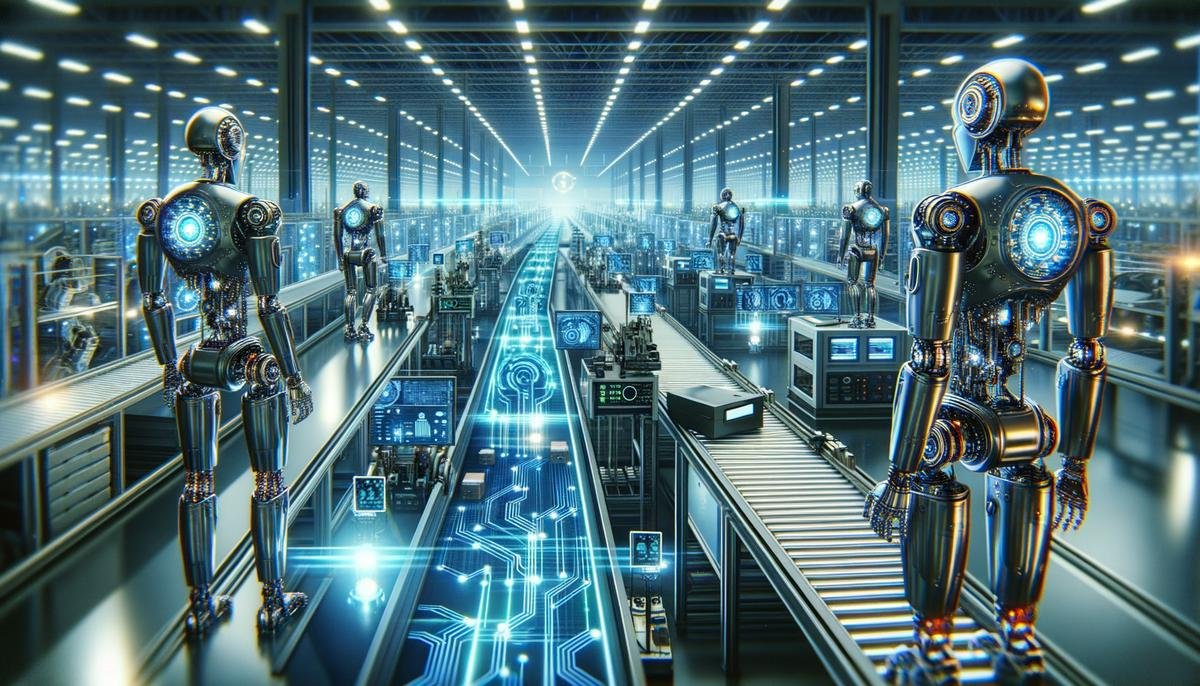
Embracing Siemens’ AI technology marks a bold step forward in the realm of manufacturing, offering a blueprint for what the future of the industry could look like. Despite the challenges that come with integrating advanced AI into existing frameworks, the benefits far outweigh the hurdles. With a focused approach on overcoming these obstacles, businesses can unlock a world of possibilities, driving innovation, efficiency, and growth. As we look ahead, it’s clear that Industrial AI holds the key to a smarter, more dynamic manufacturing future, ready for those who are willing to embrace these cutting-edge technologies.



